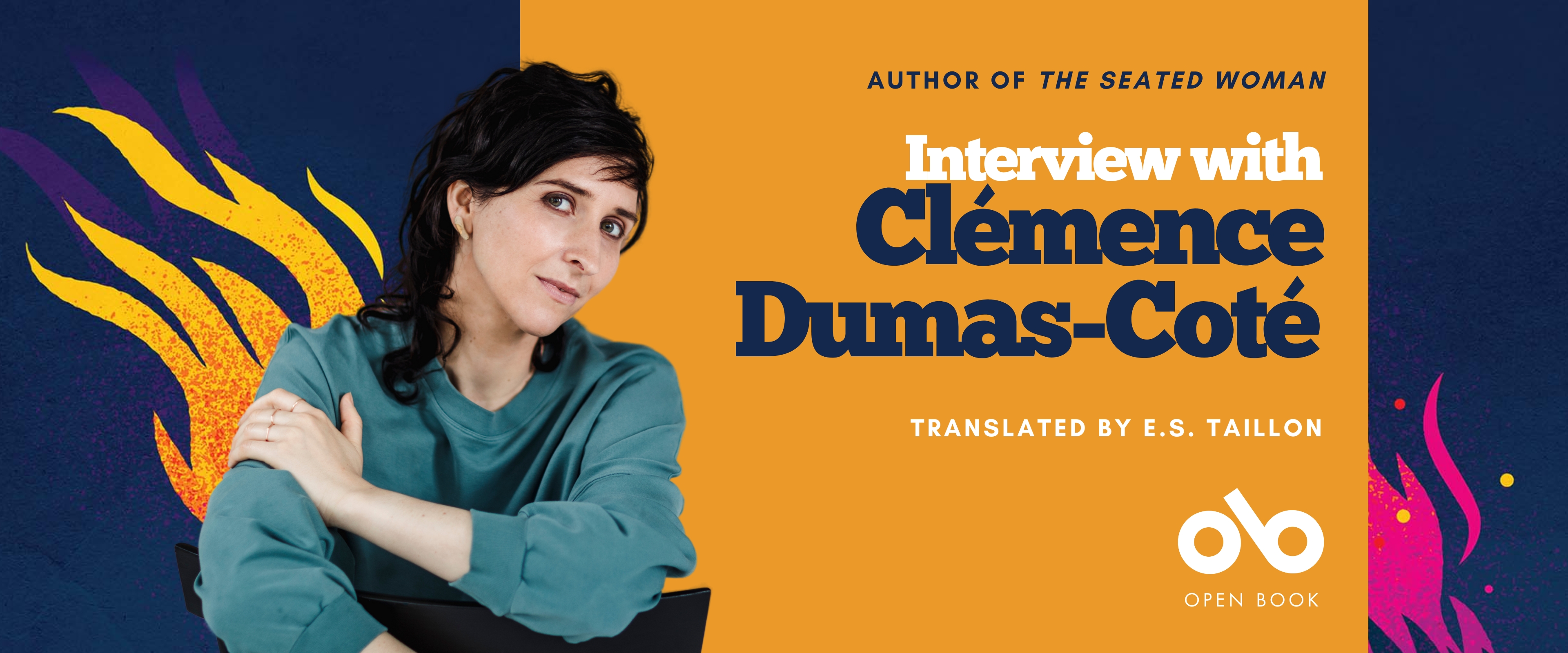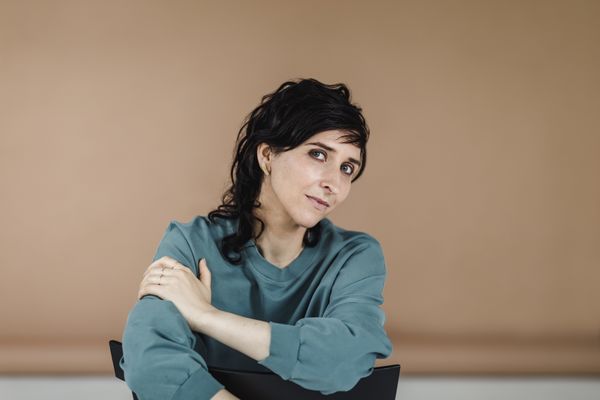Readers Will be Spellbound by The Seated Woman, the New Poetry Collection from Clémence Dumas-Coté
In her previous works, Clémence Dumas-Coté has captivated readers with richly-layered, immersive poems that linger long after they have been read. Based in the Eastern Townships of Quebec, her writing has previously made waves in the French language, and is on full display here in English translation for avid poetry lovers.
Her newest poetry collection is The Seated Woman (House of Anansi Press), translated beautifully into English by E.S. Taillon. It's a work that will stun audiences with the fluidity and grace of its language.
We're thrilled to share this Poets in Profile interview with the author, right here on Open Book!
Open Book:
Can you describe an experience that you believe contributed to your becoming a poet?
Clémence Dumas-Coté:
Since I was a child, I would thrive when traveling by car on very plain roads, like Highway 417 between Ottawa and Montreal. Looking at trees, all the same, for hours on a flat road, while listening to my parent’s music choices like Paul Simon or Jacques Brel led me to imagine short-movies in my head during these trips. The plainer the road, the wildest the stories or images. Words, music, a setting, characters : they all arose from the blandness of what I was experiencing.
OB:
What has been your most unlikely source of inspiration?
CDC:
My own children’s point of view on life and death or on infinity and the universe. I am a mother of four and when my children are around 4, they all step into a phase where they ask such inspirational / wild questions about time and space like « When will you die ? » or « Will we go to the park two days ago ? ». I always run to grab a piece of paper to note their exact words and save it for later when I will start a poem from it.
OB:
Do you write poems individually and begin assembling collections from stand-alone pieces, or do you write with a view to putting together a collection from the beginning?
CDC:
For The Seated Woman, I sat with a book of American photographer Francesca Woodman on my knees, and I would flip the pages and write a poem for each of the photographs. I was trying to get a sense of the dynamics taking place behind the image, like adapting photos to poetry. I was putting the poems together to generate a collection.
Your CanLit News
Subscribe to Open Book’s newsletter to get local book events, literary content, writing tips, and more in your inbox
OB:
What do you do with a poem that just isn't working?
CDC:
I read it aloud. I cut my favorite parts (when you have a strong affection for a line, sometimes you have to be worried). I mumble it. I go look in my « compost file » (a list of images or lines I cut from other poems but that I keep for further works) to find an alternative to a part that is more difficult. I simply erase the poem! I am not attached to my poems as individuals. I am more concerned about creating a full-body experience for the reader with a group of poems, and each of them has to have its own function in the system.
OB:
What's more important in your opinion: the way a poem opens or the way it ends?
CDC:
Both are equally important but I have a thing with ends. It is the signature of the voice. The way I see it, the end of a poem is like a solo from an opera singer.
OB:
What is the best thing about being a poet…and what is the worst?
CDC:
The best thing is the face people make when you mention you are a poet. The worst is the face people make when you mention you are a poet.
_________________________________________
Clémence Dumas-Coté was born in Montreal in 1986. She studied acting at the National Theatre School of Canada and holds a master's degree in creative writing. She is the author of two poetry books, L'alphabet du don (2017) and La femme assise (2019), and the novel Glu (2022).






